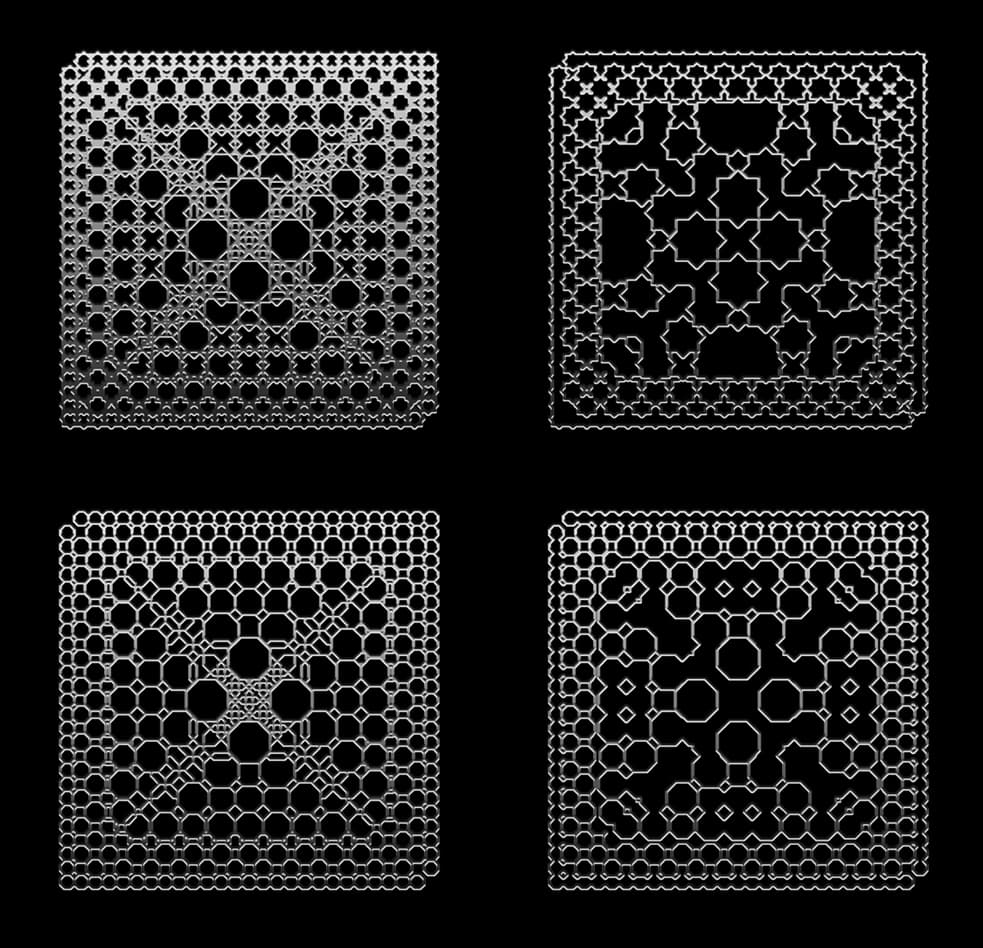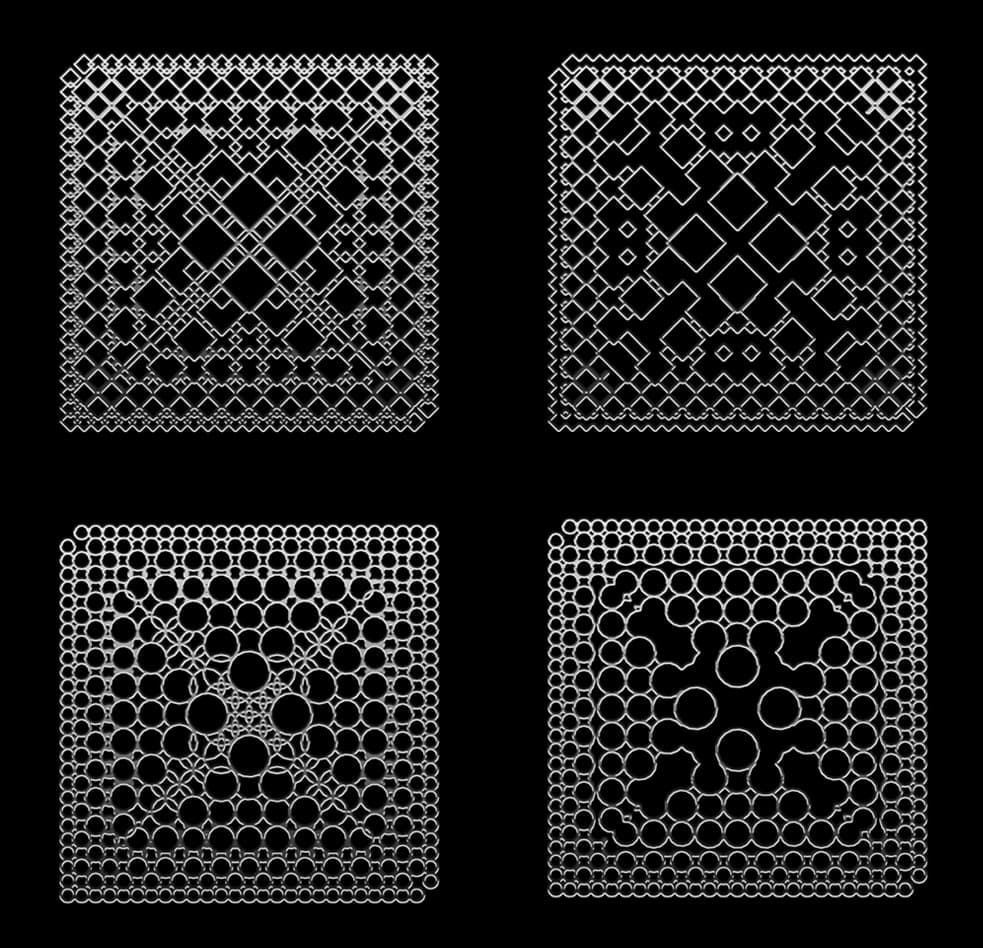2021 Joint Mathematics Meetings
Robert Krawczyk
Artists
Robert Krawczyk
Artist
BitArt
United States
Statement
Generating variation in a design using digital algorithmic methods is fairly easy, the difficult part is to interpret or translate the raw data into viable architectural elements. An important step is to develop an appropriate graphic presentation of these ideas. Many were tried before this one was developed. The rendering method demonstrated here is a good first attempt. This method of translation enables the algorithm to do what it does best, control the pattern, and it continues the tradition of a designer as interpreter of events; an extremely powerful and desirable combination of the digital and the designer.
Artworks

Metallic Lace: A system of ornament based on Cellular Automata
25 x 25 cm
Four Prints
2011-2019
These panels show a set of variations exploring the interpretation of history in the simulation based on a cellular automata algorithm. Cellular automata simulates the essence of growth; the death and birth of cells over some number of generations within a simple two dimensional lattice. This research attempts to record the history of the growth. The history of growth is recorded by accumulating the number of times a cell is visited and then this number is used as a size factor for each cell. Finally the cells are made solid and then the edges are rendered. Twenty-seven different patterns were fully investigated from the initial generation of 450; each in 12 variations.

Metallic Lace: A system of ornament based on Cellular Automata
25 x 25 cm
Four Prints
2011-2019
During this exploration the challenge was to graphically demonstrate the cell history. The variations shown include a single 12 generation pattern in a variety of cell types: circle, square, diamond, octagon, a cross, and an 8-point star. These were all attempts to translate the raw cellular automata results into an architectural design element. The original lines that created the pattern were rendered as "metallic lace" to give them a third dimension. The cell types were translated as is, or joined to form larger areas. Architecturally these are seen as bas relief patterns, wrought iron ornamentation, or sandblasted or laser etched glass patterns.